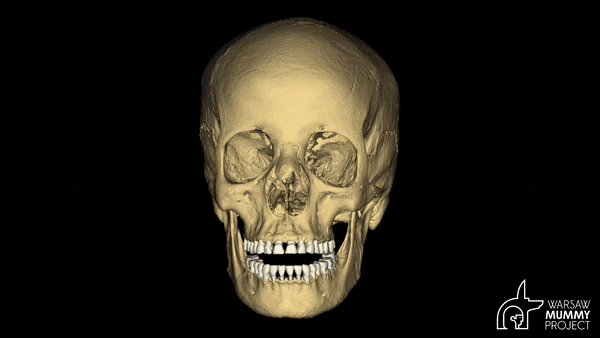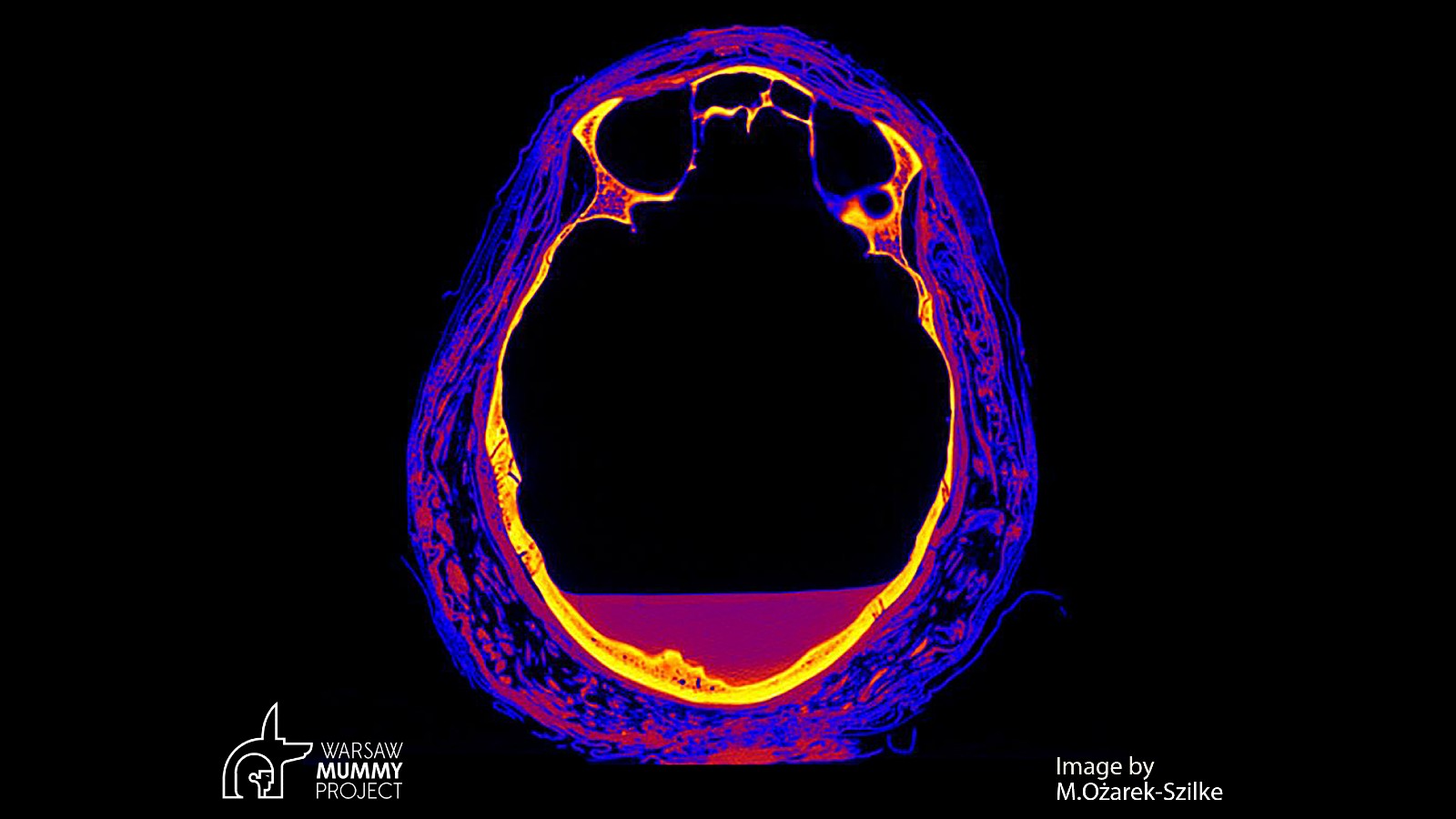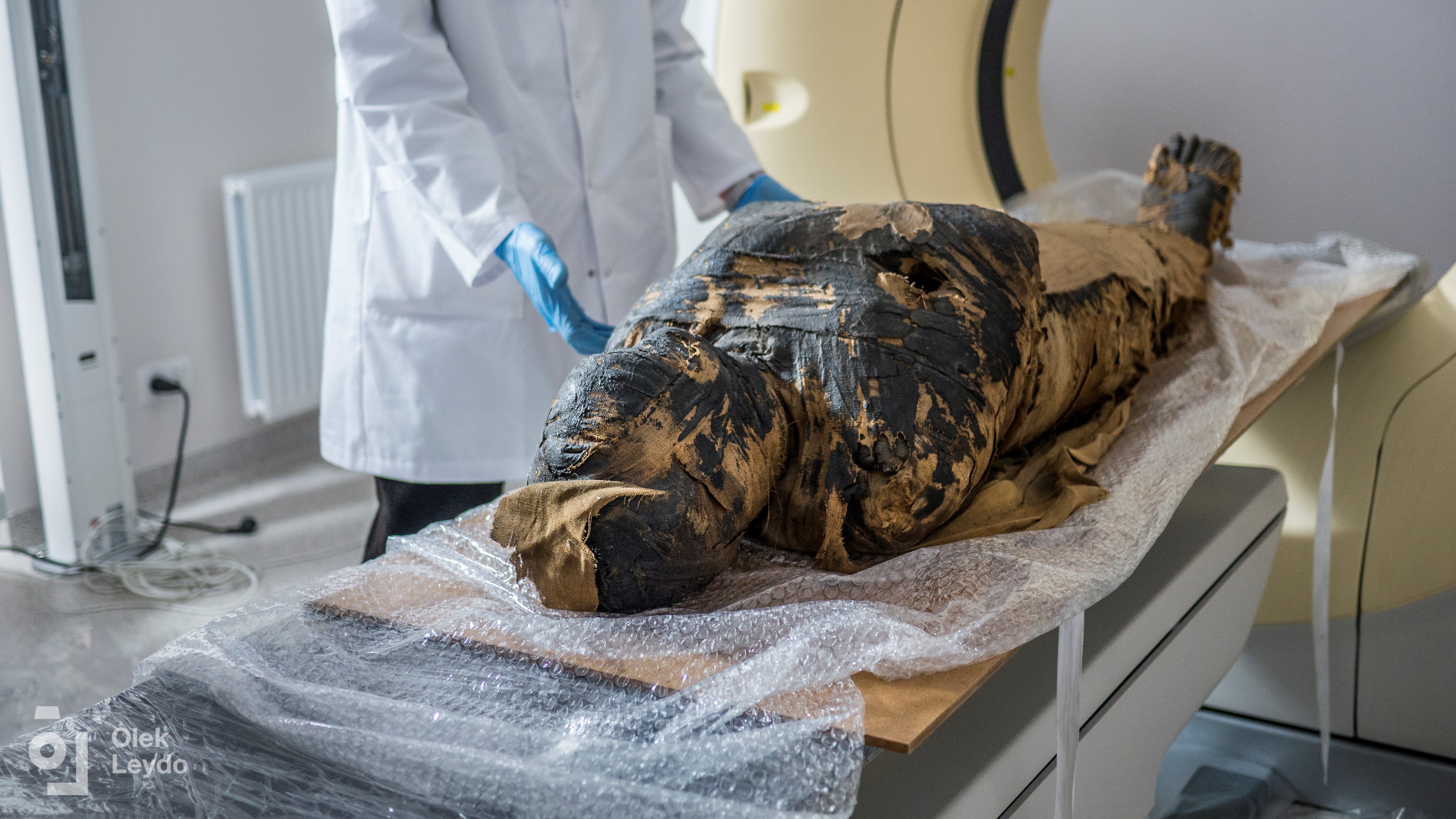Signs of cancer found in mysterious 'pregnant' Egyptian mummy
Researchers found evidence of a tumor behind the mummy's eye socket.

A mysterious mummy of an ancient Egypt woman, who may have been pregnant when she died, likely also had cancer, according to researchers. Deformities in the mummy's skull suggest a sizable tumor behind the left eye, but further tests are required to confirm that the tumor was cancerous.
The unusual mummy, who has been dubbed the "Mysterious Lady," likely came from the ancient Egyptian city Thebes (modern-day Luxor). It dates to around the first century B.C. but was found sealed in the sarcophagus of a male priest. After recently opening the sarcophagus for the first time, researchers with the Warsaw Mummy Project in Poland, were surprised to find the remains of an unknown female inside. They soon began analyzing the body for clues as to why she had been sealed in someone else's coffin.
In April 2021, researchers from the project released a study claiming that CT scans of the Mysterious Lady had revealed the remains of a fetus inside her womb, making her the world's first known pregnant mummy. The team estimated that the woman had died at around the 28th week of pregnancy. In January 2022, a follow-up paper from the Polish team described how the fetus had pickled like an egg inside the mummy. However, some experts have questioned whether the mummy was even pregnant at all and have suggested that the fossilized fetus may actually be a warped embalming pack, which was placed in the body to replace removed organs during the mummification process.
Related: Mummy of famous Egyptian pharaoh digitally unwrapped for first time in 3,000 years
Now, the same research team has announced that the Mysterious Lady likely had nasopharynx cancer, which affects the mouth, nasal cavity and trachea, according to a blog post by researchers with the Warsaw Mummy Project. The new claims are based on deformities found in the mummy's skull, but the findings have not yet been peer reviewed or confirmed by chemical tests.
The researchers first became aware of the potential cancer after a recent 3D reconstruction of the Mysterious Lady's skull, which revealed a 0.27-inch (7 millimeters) hole behind the left eye socket. This unusual gap suggests that a tumor or lesion had grown there and forced the surrounding bone away from the rest of the socket, Marzena Ożarek-Szilke, an archaeologist and anthropologist at the Medical University of Warsaw and co-director of the Warsaw Mummy Project, told Live Science in an email.

Alternatively, the hole may have been left by a cyst or caused by cribra orbitalia, a condition caused by anemia, or a lack of iron (which is common in pregnant people), which canchange the surface of the eye sockets, Ożarek-Szilke said. However, additional small deformities to bones in the nasal cavity, jaw and sinuses make cancer the most likely cause, she added.
Sign up for the Live Science daily newsletter now
Get the world’s most fascinating discoveries delivered straight to your inbox.
Normally, it would be impossible to tell exactly what caused such deformities from a skull this old. But because the Mysterious Lady was so well preserved, traces of soft tissue still cling to her bones. This tissue will allow the researchers to carry out histopathological tests, similar to those used to test for cancer today, to determine if the Mysterious Lady had cancer. Similar studies have revealed evidence of other types of cancer in mummies, Ożarek-Szilke said. The team expects to have a definitive result by the end of the year.

If these abnormalities were, in fact, caused by cancer, the disease may have been what killed the Mysterious Lady. "Cancer could have been the direct cause of her death," but it is hard to say for certain, Ożarek-Szilke said. It is also possible that the pregnancy played a role in her death, she added.
The researchers are excited about the potential discovery because it is rare to find how mummified people died. "When examining human remains, we always wonder what was the cause of the death of the examined deceased," Ożarek-Szilke said. "We don't often manage to find the answer to this question."
However, there is still a lot more to learn about the Mysterious Lady, such as why she was found in the wrong coffin and who she was. "We have revealed another piece of the puzzle from her life," Ożarek-Szilke said. "But we are still missing a few pieces."
Originally published on Live Science.

Harry is a U.K.-based senior staff writer at Live Science. He studied marine biology at the University of Exeter before training to become a journalist. He covers a wide range of topics including space exploration, planetary science, space weather, climate change, animal behavior and paleontology. His recent work on the solar maximum won "best space submission" at the 2024 Aerospace Media Awards and was shortlisted in the "top scoop" category at the NCTJ Awards for Excellence in 2023. He also writes Live Science's weekly Earth from space series.










